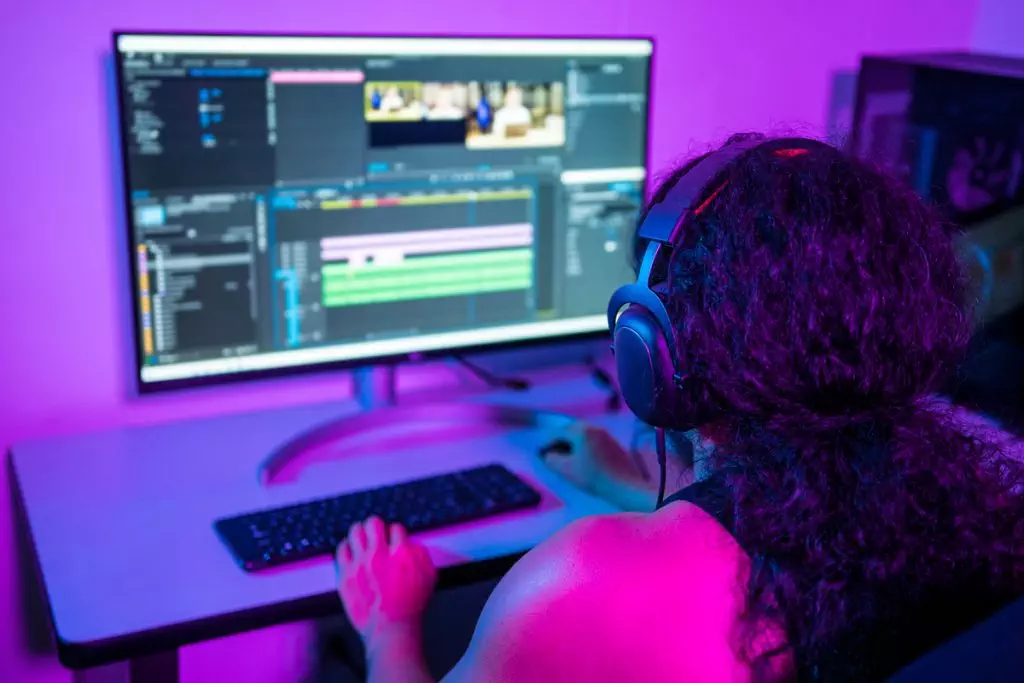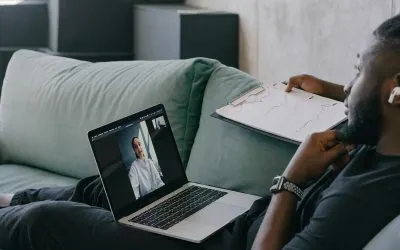Color correction is the process of adjusting the colors of a video to ensure they are accurate, consistent, and visually appealing. It’s a critical step in the video production process and essential to creating engaging content for your business start-up.
In video editing, color correction is a crucial skill often understated. This process manipulates and enhances the colors in your video, making it more expressive and visually engaging. With computer software tools like Adobe Premiere Pro, professionals or creative individuals can efficiently correct video color, turning an ordinary capture into extraordinary content.
Explaining Color Correction In Video Editing
Frequent misconceptions are made about color correction, with most people mixing it up with color grading. Although subtle, the difference between color correction and color grading plays a massive role in editing. Simply put, color correction consists of adjustments to the brightness, saturation, and white balance to make your video look as natural as possible. It’s about getting your footage to a neutral place.
Conversely, color grading involves creatively changing colors and tones, using LUTs, presets, and sliders to stylize the video and add mood and atmosphere. To ‘correct color’ means eliminating any color cast from the image and bringing the colors to a standard and acceptable range. A well-color-corrected video allows colors to pop while maintaining a natural look, resulting in visually appealing content that attracts viewers and encourages engagement.
Stay tuned to learn how to deploy these techniques to your videos for maximum engagement!
How Color Correction Can Enhance Your Video Content
Color correction can significantly impact the final product of your video content. By making subtle color adjustments, you can create a more visually appealing video that captures your audience’s attention and keeps them engaged.
Here are a few ways that color correction can enhance your video content:
- Sets the mood: Colors can play a huge role in setting the tone and mood of your video. Adjusting the colors can create a specific atmosphere that reflects your brand and message.
- Balances exposure: Correcting colors can help balance exposure, ensuring all video parts are shown in the best light. This can help create a more dynamic and visually pleasing video.
- Highlights vital elements: By adjusting the colors of specific components and objects within a video, you can draw attention to key points and create a hierarchy of importance.
- Captures attention: Using bold and vibrant colors, you can charge your audience’s attention and make your video stand out.

Critical Concepts In Video Color Correction – Color Grade, Brightness, And Saturation
Color grade, often regarded as the poetic part of the process, adds an extra layer of aesthetics to your video color. After the initial color correction, color grading injects the video with a distinct tone or mood that encapsulates the narrative or theme. It involves fine-tuning visuals for intentional, creative choices. Adobe Premiere Pro, an industry-standard video editing software, offers a wide array of tools to help you master this art, using presets and sliders for smooth operation.
Brightness and saturation also play vital roles in video color correction. Brightness refers to the overall lightness or darkness in a video. It influences how other colors appear, and excessively high or low brightness can result in a loss of video quality. On the other hand, saturation defines the intensity of the colors—from a dull, muted, black-and-white view to a full, vibrant, colorful sight. A well-saturated video can invite viewers, capturing their attention within the first few seconds.
Out of all the key concepts, color saturation is paramount. It doesn’t just affect individual colors but the entire visual representation of a video. A scene with high saturation can appear more vivid, expressive, and captivating. Thus, mastering the balance of saturation during the color correction process can elevate your video’s impact.
As you further explore video editing, remember that correct color usage isn’t just about making things ‘look pretty’; it’s a powerful storytelling tool that can drive, reinforce, and even alter perception.
Best Practices For Color Grading And Correcting Your Video
Color correcting and color grading can lead to a revolutionary improvement in the look of your video content, but practice makes perfect. However, as a busy content creator or entrepreneur, you may not have the time to dive deeply into the meticulous color correction and grading process. This is when you can rely on expert services like HuskyHD – a platform designed to seamlessly take over your footage for professional editing.
Creating compelling video content involves a keen eye for color adjustments to achieve balance, exude harmony, and ensure visual appeal. Starting by evaluating raw video footage before editing allows for basic correction. Balancing color temperature and enhancing color balance using a color wheel is crucial to managing any color casts or discrepancies in color settings. Ensuring the color features in your video footage consistently match across the scenes is the initial step toward professional video editing.
Whether editing the colors yourself or delegating the task to a video editing service like HuskyHD, leveraging powerful color correction tools will make your video look its best. Adobe Premiere’s Lumetri Color Panel is just one example of these tools – simple and easy to use, and it enables convenient color editing and fine-tuning of elements like brightness settings and color saturation.
Use good color correction and color grading practices to make your content irresistible to viewers on free video platforms. Following these steps will enhance your video quality and increase viewer engagement for your online content. So, begin painting with the colors of the videos because a well-graded video can keep your audiences engaged, alluring them to explore more of your offerings.
Correcting Your Video
Color correction and color grading form the invisible power duo in video editing. When appropriately applied, these tools breathe life into your video footage, amplifying your business startup’s high-engagement video content.
Color correction emerges first in the post-production workflow, remedying issues like wrong camera settings that produce imbalances in color temperature, color saturation, or color balance in your raw video footage. This manual color correction tool in most video editing software is simple and easy to use.
Start by adjusting the color settings for brightness and contrast, using tools like the Lumetri Color panel in software like Adobe Premiere. Don’t forget to watch your footage on different monitors – every monitor’s color profile can subtly alter the look of your video.
Color grading, technically a subset of color correction, is where your creative juices flow to visually enhance your video’s mood and tone. Color grading works by adjusting the color of your video through the color wheel and color scopes. These powerful color tools tweak hues, saturation, and light to create visual cohesion across your video clip.

Keep these practices in mind:
1. Consistency: Strive for consistency while editing a video. Whether applying color presets or making selective color adjustments, every video clip should look like parts of one video file.
2. Relevance: Your color adjustments should never exist in a vacuum. Instead, they might interplay with the video content, enhancing its narrative effect.
3. Software Familiarity: Understand your chosen video editing program’s strengths for color editing, be it the free-to-use Adobe Premiere Pro (with a free version available) or another free video editor.
4. Color Match Feature: Use the color match feature in video color grading tools that auto-adjust the color between shots using artificial intelligence. Remember, this is a starting point, not the end.
5. Don’t Rush: Get the video color just right. Sometimes minor corrections make a massive difference in your video output.
Most importantly, remember there is no “one-size-fits-all” approach to color correcting and grading. Each video editing project, like a free video or an online video, implies a new challenge to adapt to.
Lastly, don’t fear experimentation. Even though professional video editing software may appear intimidating, platforms like Adobe Premiere Pro offer user-friendly interfaces for people who have never worked with color correction settings. Try out a few color grading techniques, even if only to remove a color cast, and don’t stop until your video looks precisely the way you envision.
Harnessing The Power Of Adobe Premiere Pro For Video Color Correction
Regarding video editing and color correction, Adobe Premiere Pro stands unrivaled. With a versatile feature set catering to professionals, this video editor lets you craft tantalizing high-engagement content for business startups.
Adobe Premiere Pro, a part of the Adobe Suite, strides ahead of competitors with its intuitive interface and the impressive ability to directly color grade and color correct footage. This real-time editing prowess accelerates production flow, giving startups the edge to churn out quality content swiftly.
To the unacquainted – working on Adobe Premiere may appear daunting. However, the true genius of this software lies in its comprehensible workflow. You select a video file, import it into Premiere, and with a few clicks – your journey to masterful video color correction begins.
An empire in its own, Adobe Premiere Pro, showcases the Lumetri Color panel: a suite that turns your color correction process into an easy task. The Lumetri Color panel splits into five sections- Basic Correction, Creative, Curves, Color Wheels, and HSL Secondary. Each performs unique roles to help you change the video color as you envision.
Firstly, you encounter white balance and color temperature settings under Basic Correction. You can correct and amend the footage’s brightness and contrast with handy sliders. You’ll also find saturation adjustments here to fill or drain your footage of color as required.
Then, move toward the Creative section. You can apply presets and LUTs (Look-Up Tables) for quick color grading here. Presets form an effective shortcut for correcting color or achieving striking aesthetics in your video content. Whether you’re seeking a vintage feel or a sci-fi look, Adobe Premiere Pro brings an array of LUTs, ready to transform your raw footage.
As you progress with color correction, an additional feature in Adobe Premiere Pro allows you to make a side-by-side comparison between your corrected and original video color. It helps refine your video color correction, ensuring your tweaks genuinely enhance the footage without going overboard.
All said and done, remember editing is as much an art form as a technical one! Leveraging Adobe Premiere Pro’s powerful tools to color correct and grade doesn’t imply altering every aspect. Prudent tweaking goes a long way in creating appealing content. Adobe Premiere Pro emerges as a formidable ally in your journey of video color correction. Besides correcting color, it enables you to add artistic touches to your videos, engaging your audiences from start to finish.
So take a plunge into the colorful realm of Premiere Pro, opt for bold or subtle changes with the sliders, apply the detailed presets, and craft your high-engagement content strategically.
Utilizing LUTs For A More Powerful Color Correction
Look-Up Tables or LUTs – you’ve undoubtedly heard about this term in color correction and grading circles. But what do these LUTs do for your video editing software like Adobe Premiere? LUTs or Look-Up Tables work as a mathematical formula—translating the color values in your video footage into different colors. They can perpetuate massive color changes across your entire video clip with a single click.
So, suppose you’ve ever wondered how Hollywood manages to make its films look so distinct and characteristic. In that case, it’s all about leveraging LUTs for color grading and creating an atmospheric visual style.
The magic of LUTs resides in their ability to save you time without sacrificing the color quality of your video content. You can apply color correction settings as a LUT rather than manually adjusting color settings, thereby automating what could be an uphill part of the correction process.
Here’s how to use LUTs for powerful color correction:
1. Understanding LUT Types: There are two broad types of LUTs you’ll interact with – correction LUTs that handle wrong camera settings and creative LUTs that apply stylish color grading.
2. Selecting the Right Free Video Editor: A LUT-savvy video editing software like the Lumetri color panel in Adobe Premiere Pro is necessary. Notably, the software is free with a simplified interface for beginners.
3. Applying LUTs: Using color grading tools to import the LUT file after color-balancing your video footage. Ensure that your LUT is compatible with your software type.
4. Adjusting Post-LUT: Don’t view LUTs as a complete end-product. After applying a LUT, you can still adjust color to achieve your desired look.
5. Consistency is Key: If you’re using a LUT across every video file in your project, ensure consistency in lighting and colors for a consistent look.
Moreover, understanding the color wheel, basic color correction, and color scopes hugely aids in tailoring your LUTs. Take time to learn these concepts in depth, experimenting with brightness settings, color temperature, and color saturation.
Remember, using LUTs doesn’t relinquish your creative control. You still use color adjustments, color match features, and other color editing techniques to adjust the color as required. After all, the video output, quality, and the “feel” of the video boils down to your color grading works using LUTs.
Exploring Video Color Correction Tools – Free And Paid Options
Color correction tools are essential cogs of the video editing machine. Whether you’re tightening the white balance via manual sliders or slapping on color correction presets, these tools are here to make your video color shine.
But where do you start? How do you choose a video editor that won’t chew through your wallet but still pack a punch for quality color correction? Take a breather; we’ve got you covered.
Start first by understanding what effective color correction looks like. It’s more than just slapping on LUTs or tweaking your saturation levels. You aim for consistency, uniformity, and enhancement of the video’s mood or message. Keep this in mind as you explore various tools.
Here’s a little tour of some free and paid options you can consider based on your requirements:
1. Free Video Editor Tools
- DaVinci Resolve: A top-notch professional grading tool used throughout Hollywood. Despite being free, it has a comprehensive color correction and grading suite.
- HitFilm Express: A capable all-rounder, this offers both color correction and fixing tools. The UI is intuitive for a fast learning curve.
2. Paid Video Editing Software
- Adobe Premiere Pro: It’s one of the most versatile and popular video editors. The Lumetri Color tool inside Adobe Premiere Pro allows powerful color grading with LUTs, presets, and manual sliders.
- Final Cut Pro: Apple’s heavyweight video editor also packs a punch in color correction tools. The user-friendly interface is a boon for beginners.
Remember, the best video editor depends on your needs. Consider your video editing ambitions, budget, and comfort with learning curves.
When you’ve chosen your video editor, learn how to use it to its full potential. Use multiple tools within your editing software. Work with LUTs, saturation, brightness sliders, and exposure to get the right color grade. Try presets for a starting point, then tweak them to create your unique look.
Choose wisely and start experimenting today!
Deciphering Color Scopes For Accurate Color Correction
Ever felt lost in the color correction and color grading process when adjusting your video content’s look and feel? Here’s where your answer lies – color scopes. They unlock a scientific, data-driven approach to color correction.
Color scopes are the GPS of your video editing software, guiding you on color balance, adjusting color saturation, and ensuring color compatibility across all monitor’s color profiles. They’re vital to achieving accurate color, consistent brightness settings, and a professional look for your video.
Several color scopes offer a different perspective on your video’s color data. The most common ones include a waveform monitor for brightness and contrast, vector scope for color saturation and hues, and histogram for general exposure. To use color scopes, refer to these while tweaking correction settings inside your video color correction tool, like the Lumetri color panel in Adobe Premiere Pro. They will give you a clear, objective view of what’s happening to your color adjustments.

Choosing The Best Video Editing Software For Color Correction
Choosing the right video editing software hinges on color correction features, user-friendliness, hardware performance, and budget. Armed with the knowledge of color scopes and correction tools, dive into some of the best software for color correction:
1. Adobe Premiere Pro: Adored by professional video editors, its Lumetri Color tool offers comprehensive color correct and color grade features, from basic sliders for adjustments like brightness and saturation to advanced LUTs and presets.
2. DaVinci Resolve: Free and feature-packed, DaVinci Resolve excels at color correction and grading with a user-friendly color wheel and an excellent collection of LUTs, sliders, and presets.
3. Final Cut Pro: Exclusive to macOS, Final Cut Pro merges powerful color correction tools with an intuitive design. It includes color wheels, curves, and sliders to adjust white balance and saturation.
4. HitFilm Express: This free video editor stands out for its beginner-friendly interface and a decent set of color correction tools, including color wheels, scopes, and sliders.
If you need assistance or need professional video editing and production services, please visit huskyhd.com. Utilize their expertise for an excellent visual outcome while you focus on your core tasks.
In conclusion, this knowledge and application ensure consistency in video color and springboard your audience engagement to new heights. Like any craft, there’s a learning curve involved. So, don’t hesitate to get hands-on – start color grading and experimenting.
Navigating through the intricacies of colors will amplify the creative quality of your content and, in turn, better captivate your audience.





0 Comments